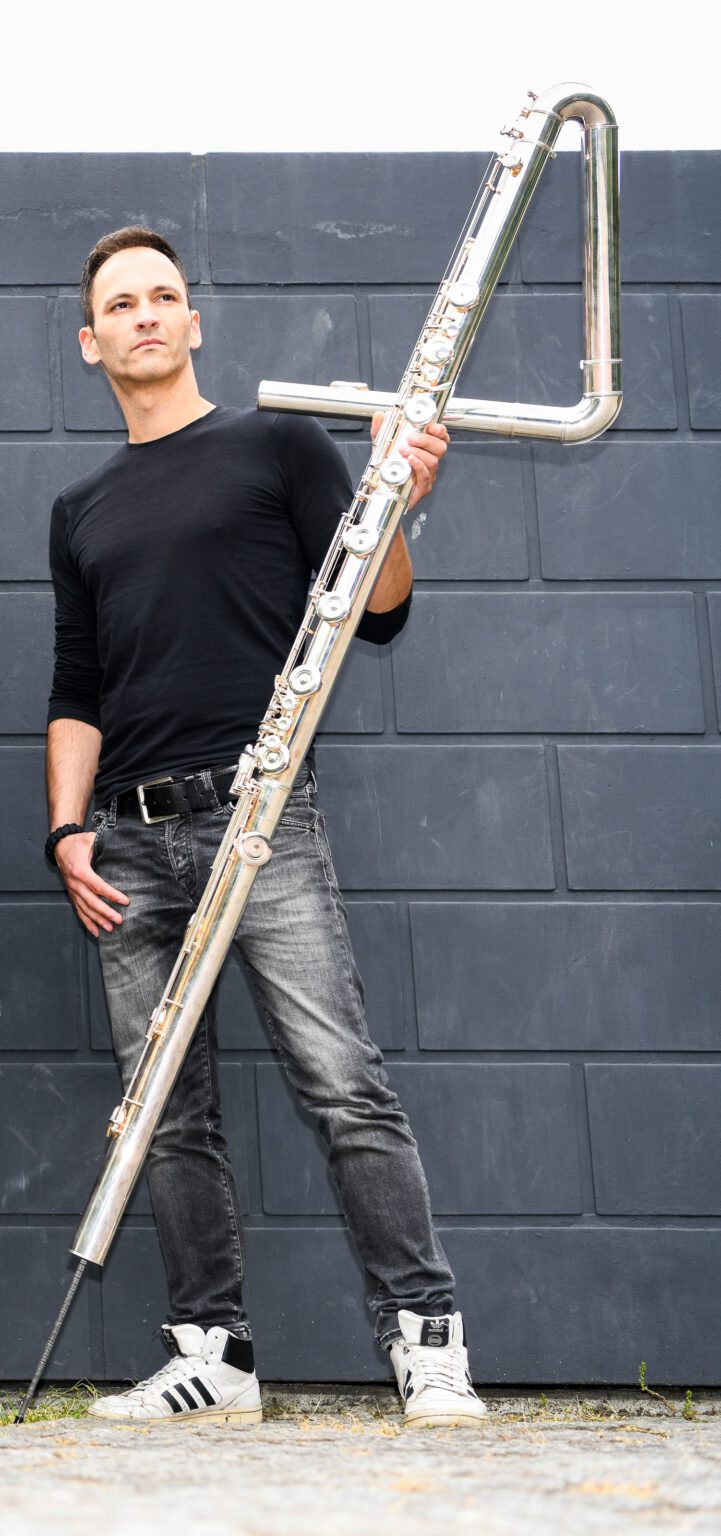the instrumentalist
I have been singing and playing instruments since I can remember.
Starting with the voice, the instrument I always have with me, I soon discovered that I was able to touch people with my voice and ended up on stage as early as elementary school.
It was a natural conclusion for me to check out all instruments I could get a hold of and I played almost everything for a time. But the instrument I really fell in love with is the flute, which I ended up studying extensively. Playing the flute is very similar to singing in many ways and since I am a low baritone, it was natural for me to seek out the lower flutes, which I now specialise in.
the low flutes
The lower members of the flute family offer a very distinct color palette and are especially well suited for haunting atmospheric sounds, percussive effects and are a great addition to film and game soundtracks.
the alto flute
The alto flute is the next lower flute instrument after the concert flute (and the much rarer flute d’amour) and sounds a fourth lower with the lowest note being g (or f sharp when equipped with a b foot). The instrument has its roots in the renaissance bass flute, which was also in g. It has a warm sound that can be compared to a mezzo soprano singer and has a great dynamic range. With the first instrument being documented as early as 1858, it has been around for a while now. It gained a lot of popularity in the 1960’s and 70’s through its use in film music by Henri Mancini and other composers, but it was already used much earlier in orchestral music by Ravel, Stravinsky and Holst.
the bass flute
The bass flute sounds a full octave below the concert flute and has a very distinctive, haunting sound. The low register can be quite powerful and rich while the middle and high registers usually sound thinner and more breathy when compared to the concert or alto flute and can be used to great effect. A very prominent and beautiful bass flute solo can be heard in the overture of Disney’s “The Jungle Book”. It’s also featured prominently on the soundtrack for the game “Horizon Zero Dawn” and its sequel “Forbidden West”. The big diameter of the instrument allows for percussive effects to be quite loud. Due to its limited dynamic range it is often amplified. The modern version of the bass flute has been around for a century now.
the contrabass flute
With the first instrument appearing in 1988, the contrabass flute is one of the more recent additions to the flute family. It sounds two full octaves lower than the concert flute, going down to C (or B when equipped with a low b foot). This instrument produces a warm, thick and rich sound and offers quite a lot of dynamic range within the limits of its comparatively low volume. Good solo instruments can be played with great virtuosity and play beautifully up to the end of the third octave and beyond. Percussive sounds have a great effect on this instrument, especially when amplified.
I play a contrabass flute made by Eva Kingma.

photo by Thomas Panzau
I only wrote about the lower flutes that I personally own and play. There are even more members of the flute family:
- Contr’alto flute in g, which sits between the bass flute and the contrabass flute.
- Sub contrabass flute in g, a fourth lower than the contra.
- Double contrabass flute, sounding a full octave below the contrabass flute. A new and fantastic double contrabass flute by Eva Kingma just came to the market, check it out: https://kingmaflutes.com/wpfk/double-contrabass-flute/
the instruments I own and play
modern concert flutes
- piccolo
- concert flute
- alto flute
- bass flute
- contrabass flute
early flutes
- baroque flute after Rottenburgh
- baroque flute after Hotteterre
- flutes & piccolos from the classical era
recorders
- garklein (renaissance)
- sopranino (baroque)
- soprano (baroque)
- alto (baroque)
- tenor (renaissance & baroque)
- bass (baroque)
whistles
- tin whistles
- low whistles
ethnic flutes
- bansuri (India)
- di-zi (China)
- quena (Peru)
- xiao (China)
- Shakuhachi (Japan)
other wind instruments
- bawu (China)
- tenor cornamuse
- tenor gemshorn
- tenor shawm
- several bamboo transverse flutes
other instruments
- piano
- bass guitar
- percussion
- cello
- bassoon
- loopstation